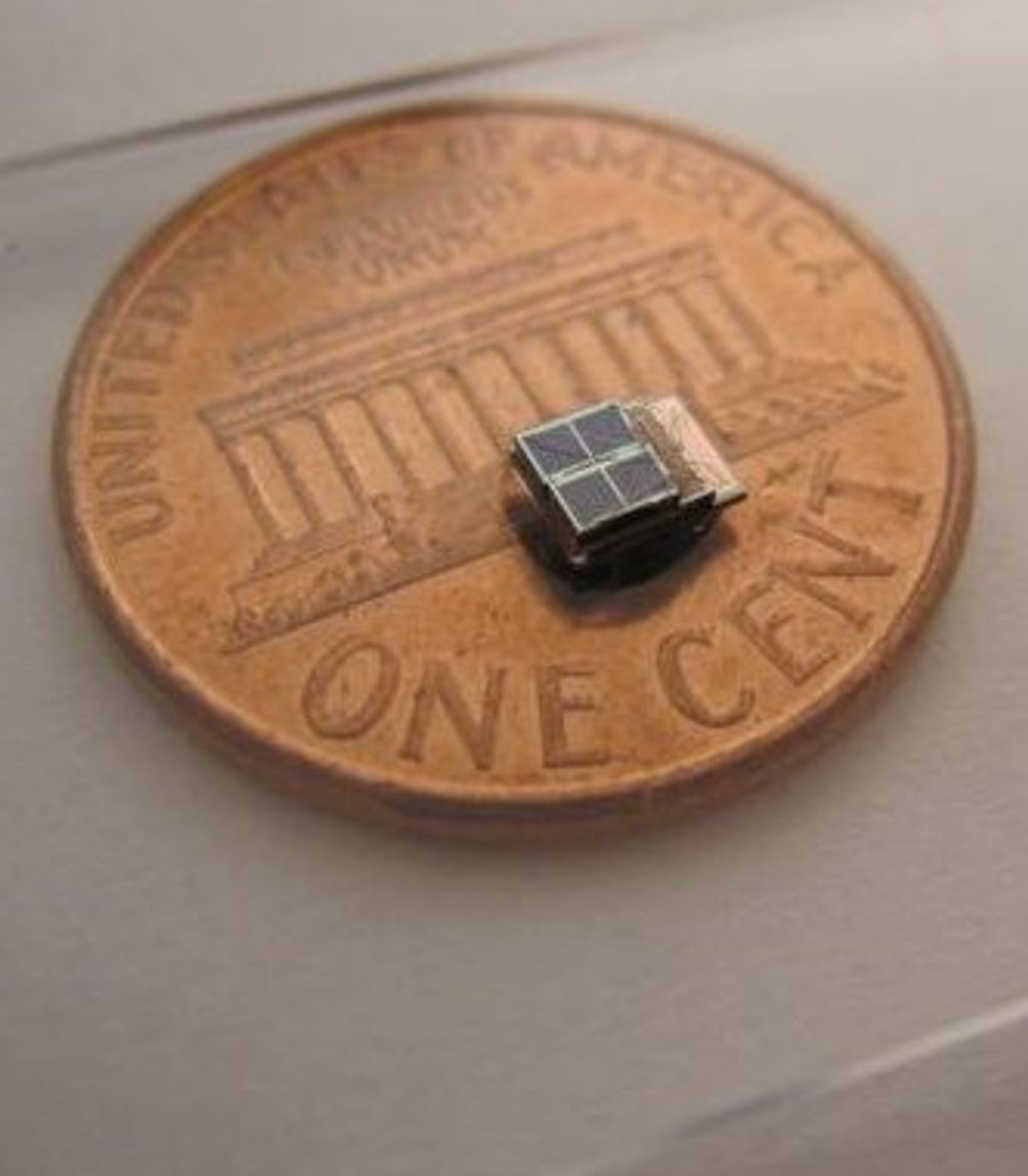The new sensor checks in at less than 9 mm3, and utilizes an ARM Cortex-M3 core processor. The system allows the sensor to consume only about 100 picowatts when in sleep mode, and only 2.1 µw upon waking up to take sensor measurements. The average power consumption comes out to less than 1 nanowatt. To provide that power, the sensor has a thin-film lithium-ion battery and two 1 mm2 solar cells. It need only be exposed to even mild lighting conditions periodically; in fact, one of the researchers, professor of electrical and computer engineering David Blaauw, said in a press release that it can even be indoor lighting to power the sensor.
The U of M researchers, who presented their work at the International Solid State Circuits Conference in San Francisco last week, said they are working with doctors to come up with potential medical applications for their device. Such internal versions of their sensor could be modified to harvest power from heat or movement, much like the microelectromechanical systems described above. They could be used to monitor pressure in the eyes or brain, or even inside tumors in cancer patients. Blaauw said in a phone call that the intraocular pressure monitoring application could actually still use solar power even when implanted within the eye.
"There is one piece that's missing from our system, and that's the communication," Blaauw said. "That still needs to be added, but we have some prototypes." He said the communications system will not substantially change the sensor's size. Other systems that incorporate a real microprocessor clock in at around 1 cm3, Blaauw said. "Ours is almost 100x smaller."
Image credit: Daeyeon Kim, University of Michigan
Dave Levitan is the science writer for FactCheck.org, where he investigates the false and misleading claims about science that U.S. politicians occasionally make.




